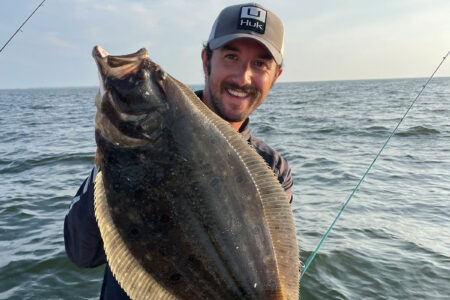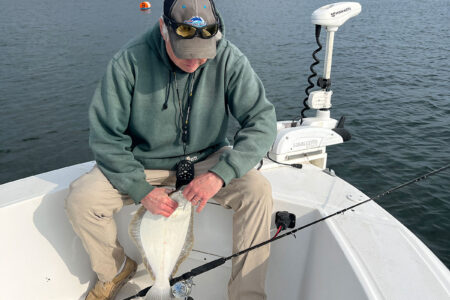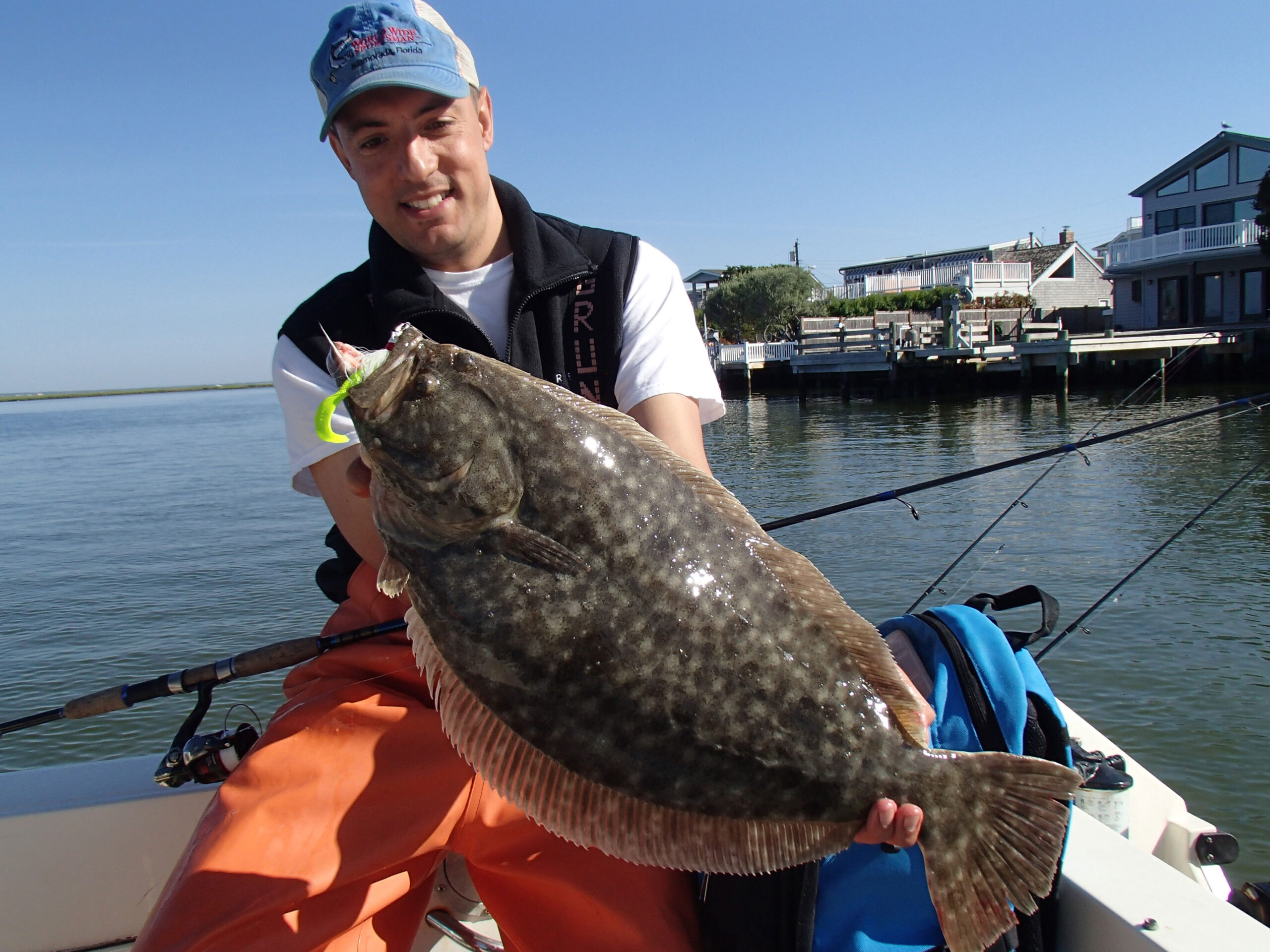
New Jersey’s summer flounder season kicks off on May 4, 2024.
Perhaps there is no more satisfying way to catch large fluke than in the shallow, skinny waters of the back bays. Many anglers don’t realize that true fat daddies pushing the 6- to even 8-pound mark are hanging tight in the back as they are post-spawn fish waiting to exit the bay systems.
With a gratuitous opening day of May 4, it’s prime time to target the flatties in the backwaters, but the key is knowing how to fish the super shallow flats.
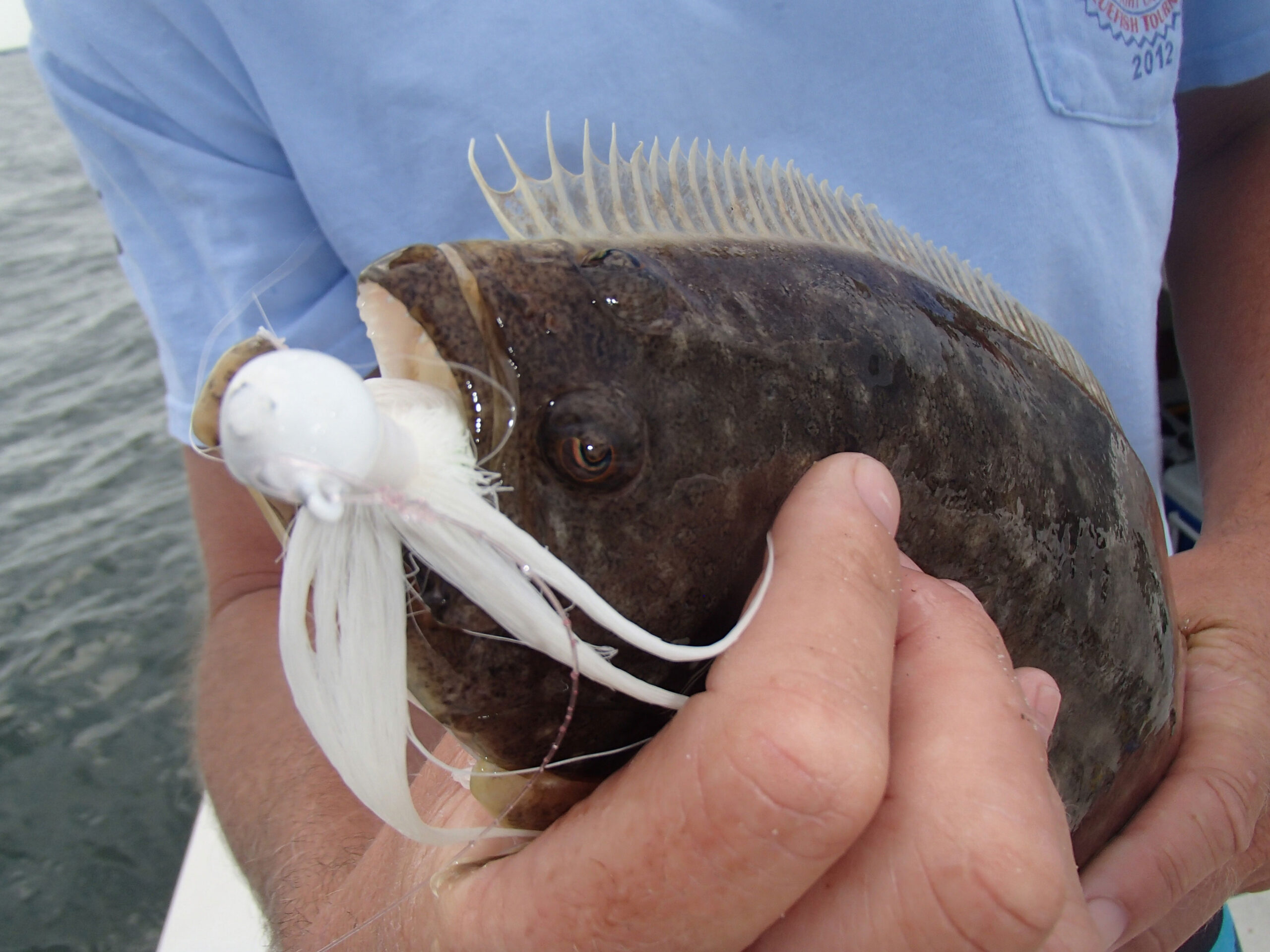
Skinny Water Arenas
All up and down the 128 miles of coastline of Jersey, backwaters abound. A wide array of locales attract fish. In the northern sections, the Navesink and Shrewsbury Rivers are prime; moving into the central coast, Manasquan River, Barnegat Bay, and the Great Bay, Little Bay area; then down south to the Wildwood, Sea Isle, Ocean City, and Cape May backwaters, all of which hold miles of winding channels and large, expansive shallow bays.
The Intracoastal Waterway (ICW) offers protection for flatties to wander in and out of the 8- to 20-foot depths then come up on the shallow flats on either side of the ICW to sun up and warm in the early spring months. Some overlooked areas to find fluke are around gas docks and boat mooring areas or docks and piers where propellers kick up and create small holes for fluke to hunker down in and ambush prey as they wash on by with the tide.
It’s not necessary to be successful only if you have a boat as shore bound anglers can also get in on the action as piers, docks and fishing walls allow you to fancast and work the bucktail on its 10 to 2 swing with the tidal current.
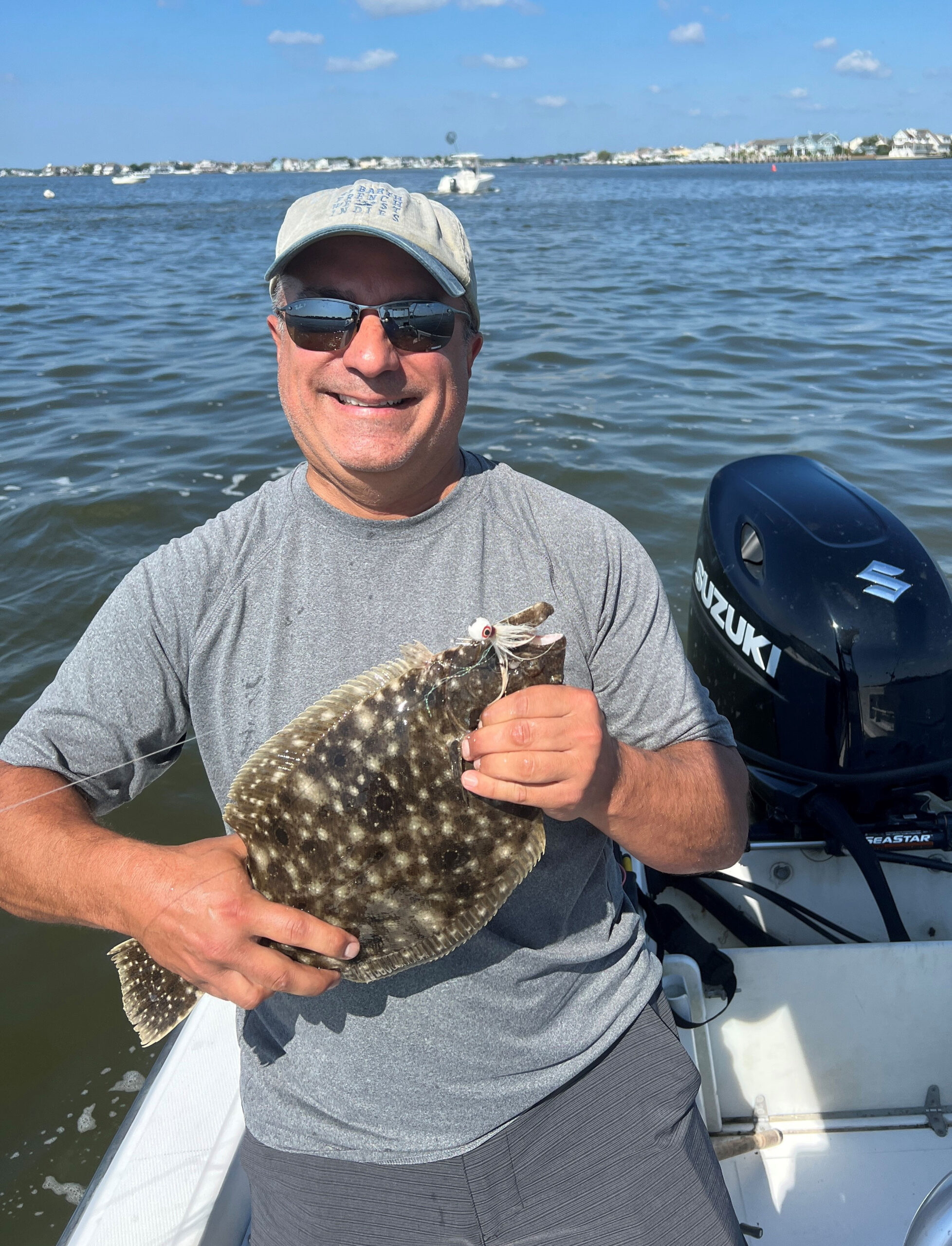
Lighten Up
First things first, you don’t need the bulky ocean water outfits to score in tidal waters. Generally, a 6-1/2- to 7-foot rod rated for 15- to 25-pound and moderate to fast action is primo, matched with a 4000 to 5000 class spinning reel. I use a Shimano Terramar rod 7-foot with a Shimano Stradic or Miravel 5000 spinning reel spooled up with 30-pound Power Pro braided line and a 4-foot section of 25-pound Seaguar Fluorocarbon leader attached via uni to uni or Albright knot. From there, all my lures are tied directly onto the line to minimize terminal tackle. The light setup is necessary to impart the proper presentation of light bucktails of 3/8- to a half-ounce and to maintain contact with the lure to feel out the bottom and jig it effectively.
During mid to late spring, fluke are looking to find that magic mid-50-degree water to spark them to feed. Incoming waters are generally colder as ocean water floods the back, and you will read temperatures in the 46 to 52-degree range. However, once the tide starts spilling out, the temps will skyrocket, sometimes 8 to 10 degrees into the 53 to 62-degree range, and that gets the fluke snapping. When the outgoing tides begin to swallow up the backwaters, fluke will move up from the channels and creep along the edges and up into the flats of 4 to 8 feet of water, where they can warm up and get the juices flowing to feed.
When I begin to target the skinny water, I usually start off by drifting the ICW channel edges to catch them on their move up onto the flats. A prime drift would be one that allows me to drift from one side of a channel through the deeper water then up onto the edge and eventually working over the flats ranging from 4 to 8 feet. Many times, you can actually get visuals of fluke lying on the sandy bay floor and watch them pursue your lure as you drift on by.
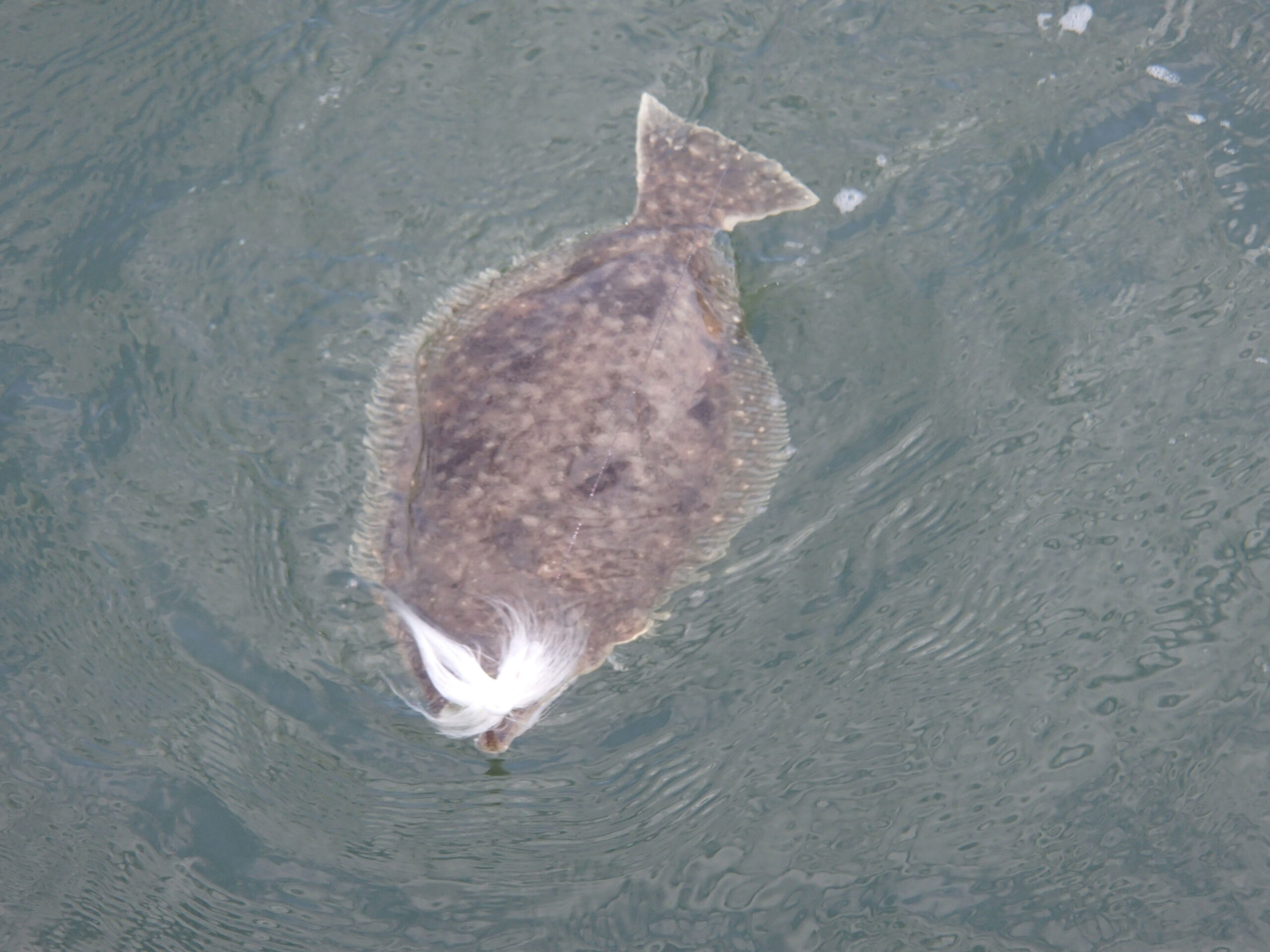
The Buck Stops Here
Hands down, small bucktails are clutch when targeting backwater fluke. The fluttering action of a light bucktail sways and drops enticingly down to a fluke in pursuit. A 3/8- to half-ounce roundhead bucktail in white, white/yellow, or white/pink is preferred in clear water conditions, but I will switch to a chartreuse coloring when the water is off-color or dirty. The bucktail is tied directly via a loop knot, then 18 inches up, a dropper loop is tied for the use of a 2/0 to 3/0 plain white bucktail teaser fly. The teaser not only attracts fluke to pursue two baits, but the light floating action of the teaser most times gets hit before the bucktail.
Doubleheader catches are commonplace with a teaser. Both the bucktail and the teaser are seasoned with a small 3- to 4-inch strip bait cut into a half-inch wide tapered, and single hooked through one end. Bluefish, mackerel, sea robin all make great bait strips, but a tried and true Berkley Gulp 3- to 4-inch Swimming Minnow is absolutely lights out for fluke as it dishes out plenty of scent and can stay on the hook for multiple fish catches.
| NJ RULES & REGS |
| New Jersey’s summer flounder (fluke) season is open from May 4 to September 25 with an 18-inch minimum size and three fish bag. Special New Jersey management zone regulations include 17-inch minimum and three fish bag west of COLREGS on Delaware Bay, and a 16-inch minimum and two per angler limit at Island Beach State Park. |
The key to working a bucktail properly is to be sure you are always holding bottom to bounce the lure effectively. If a drift is moving too quick, instead of amping up the bucktail weight, simply let more scope of line out so you ensure the proper action and it’s not hampered by a heavier weight. Pop-twitch the bucktail on and off the seafloor, raising the rod in quick twitches once every 3 seconds, allowing the lure and teaser to pop up and flutter back down.
Fluke are aggressive and will actively pursue the lure sometimes all the way to boatside. Early season flatfish sometimes tend to “lay on the bait”. An obvious hit from a fluke should elicit a quick, sharp hookset, but if you feel heavy weight on the line, open the spool and let some slack in the line so the fluke can inhale the lure.
Without a doubt you will catch loads of short fluke, but plenty of 18-inch plus sizers during the spring months in the backwater shallows. But be prepared for high caliber fluke pushing into the 4, 5, 6 plus pound bracket too. Remember you have lighter outfits and cannot horse a fish in and realize that fluke will have a ton of fight in them as there is no water for them to prolong the battle, so drags should be set a little lighter than normal to allow for the fluke to pull the drag out and not pull the hook out once it resists. Take your time with the fight, and always have the net prepared to scoop up the fish at boatside.
Once you target fluke in the shallows on light tackle, you’ll be hard-pressed to find a more exciting way to catch them.

